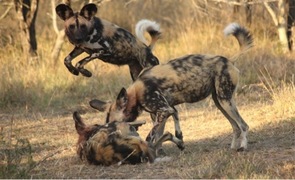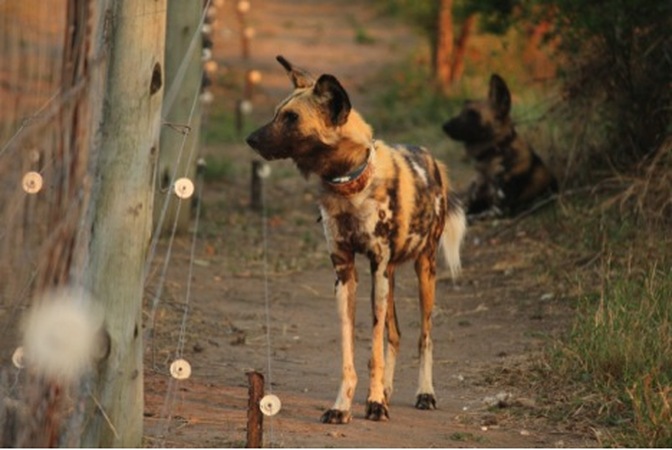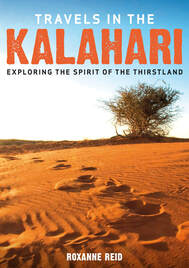 Photo: S Chapman
Photo: S Chapman This makes collecting data a real challenge. The intricacies involved in creating and maintaining relationships in this highly social species means a constant stream of social interactions between each and every member of a painted dog pack. The more dogs you throw into the mix, the trickier it becomes.
2. They are often overlooked.
This is true when it comes to trying to fund research, but it’s also true when it comes to tourism, and even sometimes, conservation. Painted dogs are often a reluctant last on the list of reintroductions into both public and private reserves, taking a back seat to the more ‘popular’ and easier-to-manage species like lions and cheetahs. Many of the reserves that could ecologically support a pack of dogs choose not to because of the financial implications of losing some income from the sale of prey species.
It doesn’t matter how many scientific papers you’ve read, how many introductions you’ve attended, or how closely you’ve watched the population dynamics, painted dogs have an uncanny tendency to disregard all your hard-earned knowledge and defy predictability. As a researcher this can be a bit demoralising, leaving you feeling the fool when they do the exact opposite of what you thought would happen. There’s still so much we don’t know about painted dogs. The traditional descriptions of painted dog sociality are beginning to feel more and more inaccurate as we obtain better information, and a new picture is emerging of a species that is more socially flexible than we have given them credit for.
4. Painted dogs are really difficult to keep tabs on.
Even with the technological improvements in monitoring equipment, dogs can be really difficult to keep track of. They are difficult to locate inside of protected areas and you can imagine just how much more difficult they are to find when they break out of protected areas. This can lead to a situation where we don’t know the fate of certain individuals as they just fade off the radar, both inside and outside of reserves. The more collars we can put on dogs and monitor in the meta-population, the better our understanding of all aspects of painted dog biology will be.
5. Painted dogs are just so vulnerable.
We’re talking about the most endangered carnivore in the country, with only about 450 dogs left in the wild. They’re vulnerable to just about everything – to habitat fragmentation, human-wildlife conflict, snares, inter-species competition, disease, injuries, predation and becoming roadkill. On top of all this they are vulnerable to an Allee effect, which means that as the number of animals in a pack decreases, the chance of the pack surviving decreases. So the effect of each one of those threats I just listed gets amplified in painted dogs. Each time we release a new pack into the meta-population all I can do is hold my breath and hope for the best.
It dawned on me when writing this post that I could have titled it ‘Top 5 reasons why I study painted dogs’ because the list is the same. The species is complicated and charismatic, and most of all, is in drastic need of protection.



